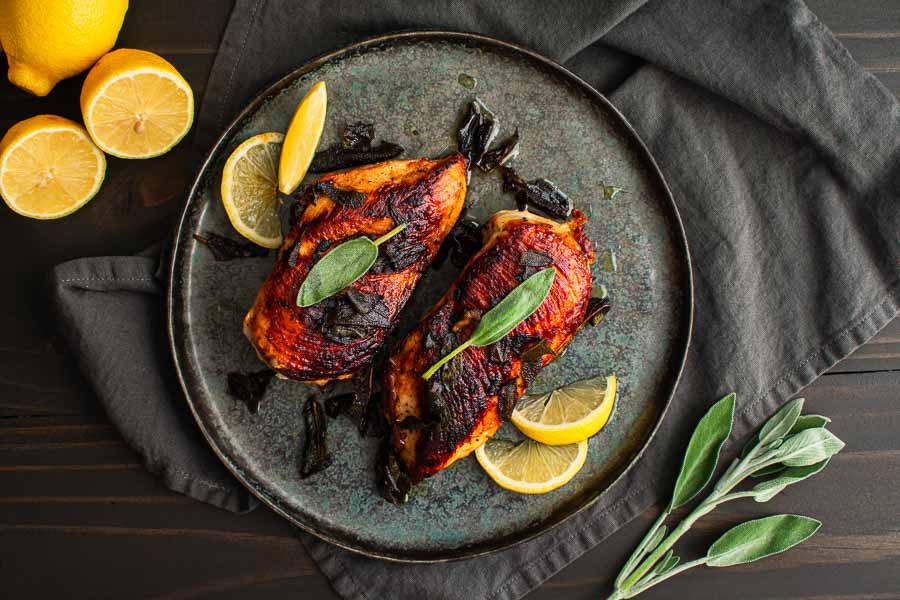After Christmas dinner and the leftovers were gone, I still had plenty of leftover ingredients. Fresh herbs from the roast duck, mascarpone cheese from the mashed potatoes, and more. I needed to use them up, so I sat down with a cup of Spiced Christmas Coffee, opened Pinterest, and started searching for recipes. Making Christmas dinner was exhausting, so I looked for simple recipes with just a few ingredients and (hopefully) quick cooking times. This Chicken Breasts With Fresh Sage recipe fits that bill perfectly, and it would use up the delicate fresh sage. It would have been the first ingredient to spoil, so I had to use it up ASAP.
This chicken breast recipe is from Trattoria by Patricia Wells. I’m adding it because it goes very well with the Lemon Risotto recipe that I posted. Moreover, it’s so easy with tons of lemony flavor.
The Ingredients
As I mentioned, I had the fresh sage on hand. It has a few black spots here and there, but it was still in pretty good shape. I also had extra virgin olive oil, unsalted butter, sea salt, and black pepper in my pantry.
All that was left to shop for was boneless, lemons and skinless chicken breasts. Both were easy to find at my usual grocery store.
This recipe calls for four chicken breasts, but I only bought two since it’s just my husband and me. That was the only ingredient I reduced, though, since I wanted plenty of sauce and sage leaves.
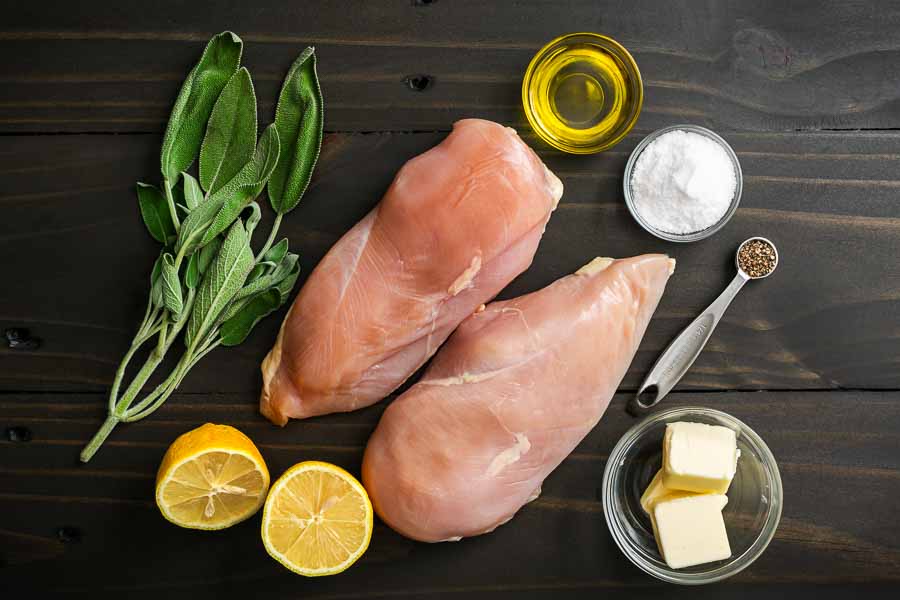
The Process
This recipe is short, and it has three main sections: marinating, cooking the chicken, and making the glaze.
Marinating the Chicken
My Chicken Breasts With Fresh Sage began with marinating the chicken. The marinade was a simple three-ingredient mixture, and the chicken only had to marinate for 30 minutes. I expected to have to pound the chicken to tenderize it, but the marinade took care of that in addition to adding flavor.
I mixed up the marinade in a 1.5-quart mixing bowl and tucked the chicken breasts into it. The small-ish size was perfect! Flipping the chicken over after placing it into the marinade made sure I got plenty of the mixture on all sides.
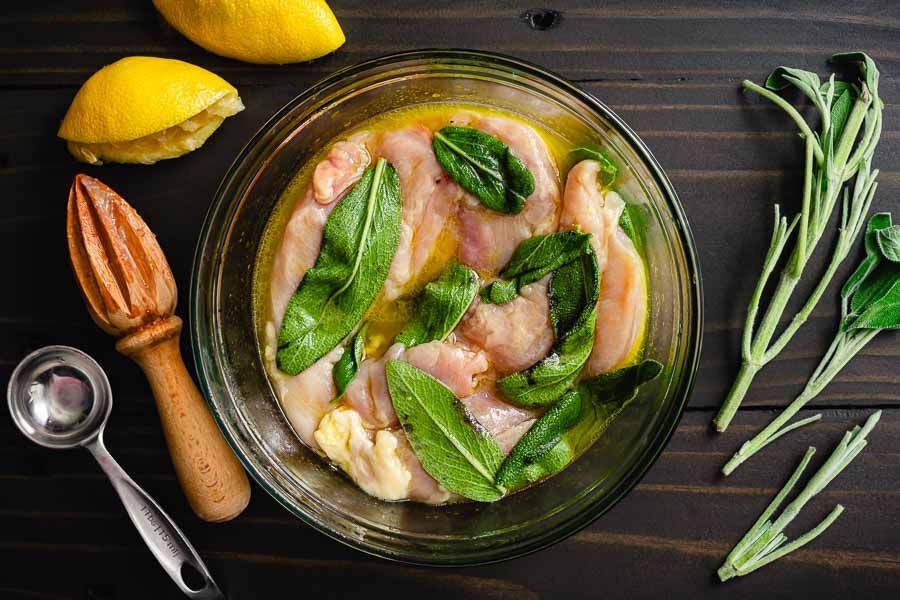
Tip: Pick a few sage leaves out of the marinade before adding the chicken. Add the chicken breasts to the marinade and flip them over once or twice to distribute the marinade. After that, place the reserved sage leaves on top so you get the marinade and sage flavors on both sides.
I had plenty of time to prep the rest of the ingredients while the chicken marinated. Once it was finished marinating I came very close to simply discarding the marinade like I normally do.
Tip: Be sure to save the marinade! Most recipes have you discard it, but this one uses it to make a glaze/sauce.
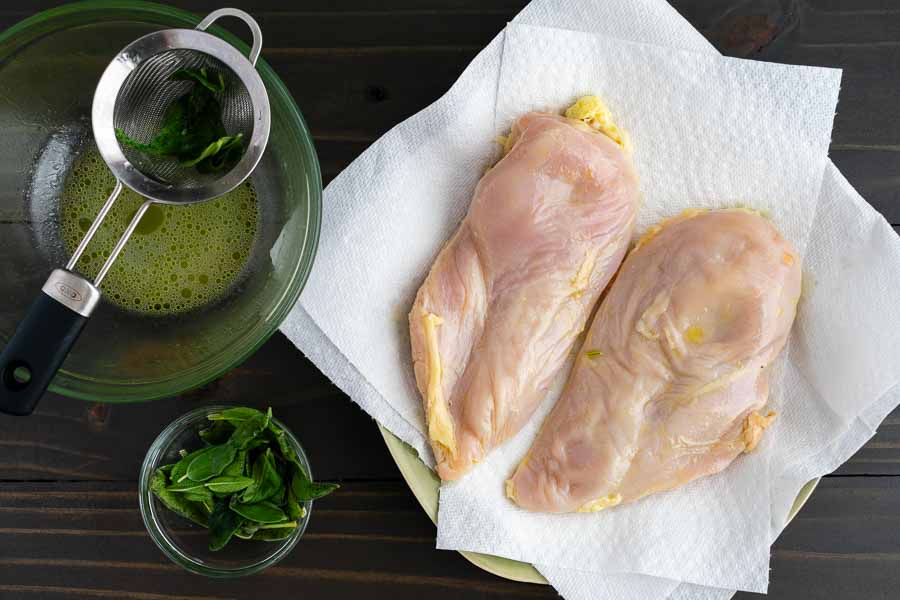
Cooking the Chicken and Sage
Next, I removed the sage leaves from the marinade, patted the chicken dry, and moved on to cooking. The chicken needs a good sear, so my first thought was a cast-iron skillet. However, acidic lemon juice isn’t good for the seasoning on a cast-iron pan. I ended up using a stainless steel skillet since it is non-reactive but still gives a good sear.
Tip: An empty stainless steel skillet needs 2-3 minutes to preheat properly. Also, butter burns easily so don’t add it until just before the chicken.
I preheated the skillet to medium heat (5 out of 10 on an electric stove) since the chicken breasts needed to cook for 10-15 minutes. That might sound low, but it seared and kept the chicken from burning as you can see from the photo.
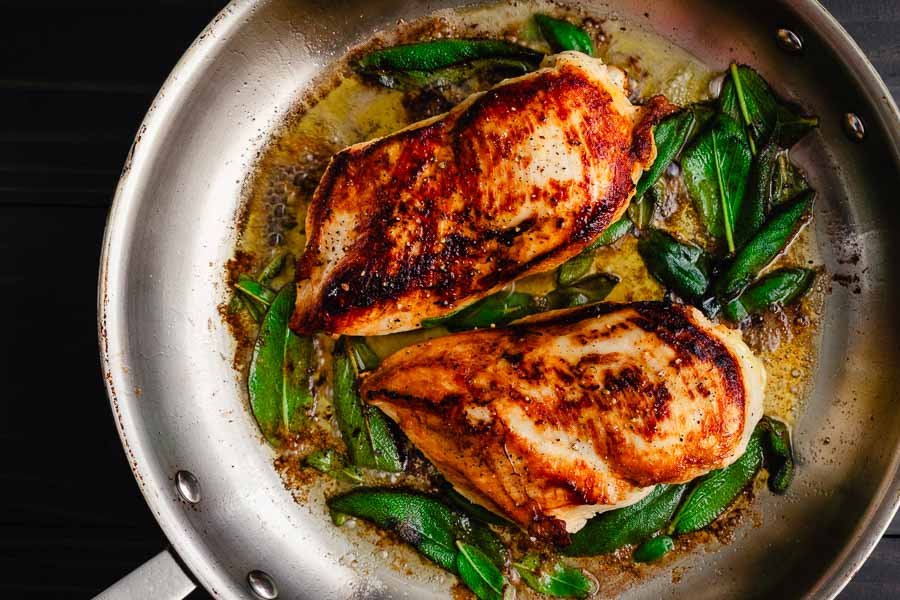
I added the olive oil, let the butter melt, then placed the chicken breast and sage leaves into the pan for 5 minutes. I flipped the chicken after that and added a meat thermometer to make sure it cooked properly. These breasts were thick, and I wanted to make sure they reached a safe internal temperature.
Tip: The minimum safe internal temperature for chicken is 165°F according to the USDA. Place a meat thermometer into the thickest part of the chicken breast for at least 60 seconds to get an accurate reading.
My chicken took another 17 minutes to reach 165°F. I flipped it a few times to keep the outside from burning. It helped, but there were plenty of burnt bits left in the pan. I also removed the sage 8 minutes after the first flip (13 minutes total).
I have never fried sage before and liked the taste, but I am pretty sure mine would be considered scorched, something the recipe said not to do. The leaves were crispy, and I did like them, but next time I would remove them around the 10-minute mark.
Making the Glaze
Once the chicken and sage were removed I poured away the extra fat and juices then added the reserved marinade to make the glaze. I expected to deglaze the pan with the reserved marinade, but that’s not what happened.
The marinade just sizzled away and became steam. Or maybe more burnt bits at the bottom of the pan—it was hard to tell, but I had a very dry pan. I tried adding more olive oil and lemon juice to the pan, but I couldn’t get the glaze to work.
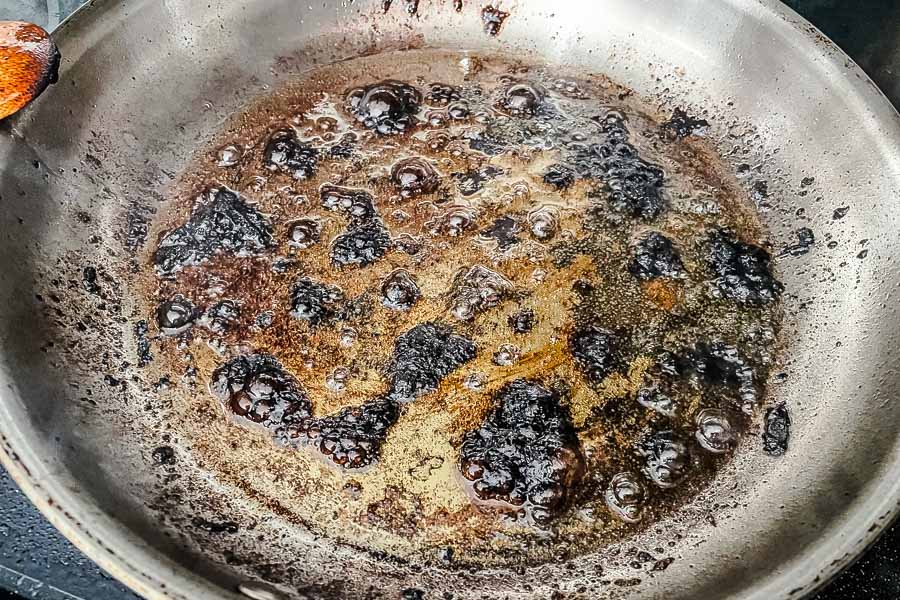
In the end, I grabbed a small non-stick skillet and added three tablespoons each of olive oil and lemon juice. I let that cook down until it thickened then added a tablespoon of butter. Somehow there were black bits in the new pan (burnt lemon juice?), so I strained it before pouring it over the chicken.
I’m not sure what happened to cause the black bits you see in the ramekin (below), but the sauce and chicken didn’t taste burnt at all. The strained sauce was a beautiful golden brown and looked similar to browned butter although the butter wasn’t in the pan long enough to brown.
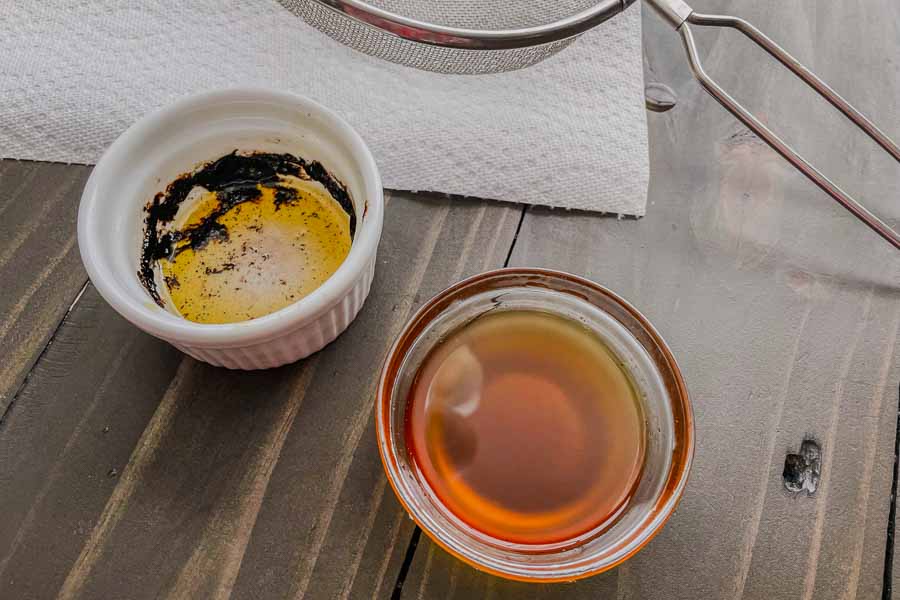
Timing
This recipe lists 45 minutes to prep and 20 minutes to cook for a total time of 1 hour 5 minutes. Here’s how my time was spent:
- 4 minutes to prep the marinade
- 30 minutes to marinate
- 40 minutes to cook the chicken and make the glaze
- includes 22 minutes to cook the chicken to 165°F
- 1 hour 14 minutes total
Using thick chicken breasts increased the cooking time, and I’m sure my trouble with the glaze did too. Honestly, I expected to go more than 10 minutes over, so I’m happy with this time.
